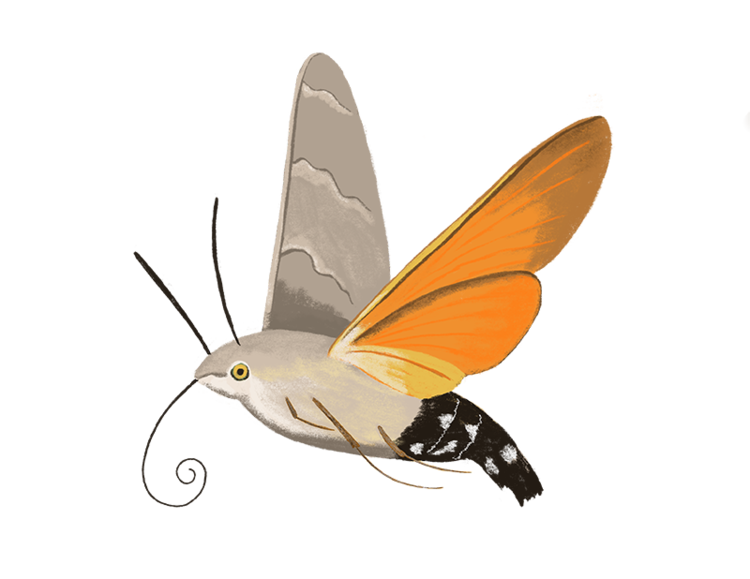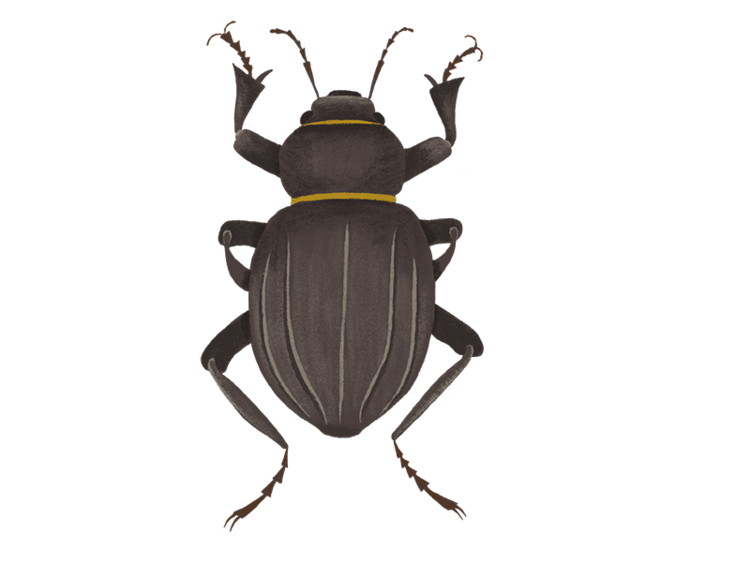Insects
Acrida Turrita
A type of grasshopper found in Africa, Europe, Asia, North America, Hawaii, and Australia. It is omnivorous, eating both plant and animal matter. A well-known pest of many agricultural crops.
American Cockroach
Not actually from America, the cockroach hitchhiked on ships from Africa in the early 1600s, demonstrating their resilience. Adults can live up to one year and an adult female will produce an average of 150 young in her lifetime. Environmental factors such as temperature and humidity affect the developmental time of the American cockroach.
Common Red Soldier Beetle
These widespread insects are also commonly referred to as 'bloodsucker' for its striking red appearance, but it is harmless. They are helpful to gardens because the adults eat aphids, and the larvae eat other pests.
Convergent Lady Beetle
Convergent Ladybugs don’t bite, but they consume several harmful garden pests such as aphids, and they never congregate in large numbers. Most importantly, when it gets cold they seek shelter outdoors. The female lady beetle lays 200 to 300 eggs over several months during spring and early summer.
Crimson Speckled Moth
Moths typically bland in color make the Crimson Speckled Moth stand out. Attracted to light, it’s known as a daytime flying moth, they can be found in many areas in Africa and distributed across most of South Africa.
Eucalyptus Long-Horned Borer
A species of beetle, the Eucalyptus Long-Horned Borer looks for decaying trees and branches, it inflicts critical damage on Eucalyptus trees. They are primarily active during the more temperate initial dusk hour.
European Mantis Biattodea
Commonly known as praying mantis, their name is derived from the distinctive posture of the first pair of legs that can be observed in animals in repose. It resembles a praying attitude. Some people keep them as pets. They can change color, often due to temperature changes. They don’t like to move much and some can spend their entire life cycle on a single plant. They are also known to turn their heads 180 degrees.
Hummingbird Hawk Moth
Hummingbird Hawk Moth flutters its wings so quickly that it can appear orange and makes an audible hum. it can be commonly found in gardens, hovering like a hummingbird as it feeds on the nectar of honeysuckle and other flowers.
LadyBug
There are more than 5,000 species worldwide. Also known as ladybirds, they have been to space and survived. They go into hibernation and emerge when temperatures reach 55 degrees. The average lifespan is 1 to 2 years.
Large-White Moth
Most types of moths are nocturnal. During the day they hide in dark places, under the leaves of trees. Fully-grown moths survive on a liquid diet of tree sap, flower nectar, and even juice from a piece of rotting fruit. These insects only live an average of 40 days. When they see an electric light, they get confused, lose direction, and fly into the light.
Mediterranean Red Bug
Also known as Stainer, and Firebug, this invasive species is a ground-dwelling bug that feeds on seeds and seed pods. They are plant-feeding insects found mostly in the tropics and subtropics, known as a stainer due to the stain they leave on cotton plants.
Mediterranean Spotted Chafer
Also known as the “White-spotted Rose Beetle” Abundant throughout southern and central Europe, and Mediterranean North Africa. They are daytime insects and can be seen as active in the bright sun when they fly readily. They visit flowers of a range of trees and shrubs as well as herbaceous plants to feed on nectar and pollen.
Pimelia-Grandis
Pimelia is a daytime insect, emerging in the early morning and late evening but remaining under the sand during the hot hours of the day. They are a part of the darkening beetle species. Commonly found in Morocco, Algeria, Libya, Egypt, Sudan, Senegal, and Ethiopia.
Rough Woodlouse
They need a humid environment; they relocate based on whether they currently need more or less water in their systems. They prefer moist, dark areas where it is possible to avoid desiccation. They live under leaf litter, rocks, and fallen logs in forests, meadows, and gardens, and are frequently found in splash zones, dunes, and salt marshes.
Red Veined Darter
Part of the dragonfly family is the Red Wing Darter or also known as the Neon Skimmer. They are rare to see and in some Asian cultures are signs of “good luck” They are attracted to water because they breed in water. Their young hide among water plants.
Dociostaurus Maroccanus
Dociostaurus Maroccanus, more commonly known as the Moroccan Locust, are considered the most dangerous invasive agricultural species around the Mediterranean. They can fly long distances and some years they congregate and create large swarms which prove fatal to agricultural lands. They span across Northern Africa, parts of Europe, the Middle East and Central Asia. They can be either brown, green, or dark-yellow, and change based on migration and swarming patterns.
Carpenter Ant
The Camponotus Herculeanus, is one of the largest ant species in the world. Known for the size and strength of their jaws they are also referred to as the Hercules Ant. Worker ants are about 5-12 mm in size, very dark in color, and notably have a red midsection and legs. Queen carpenter ants are 14-17mm in size and much darker, with transparent red shades along the sides of their bodies and legs.

















